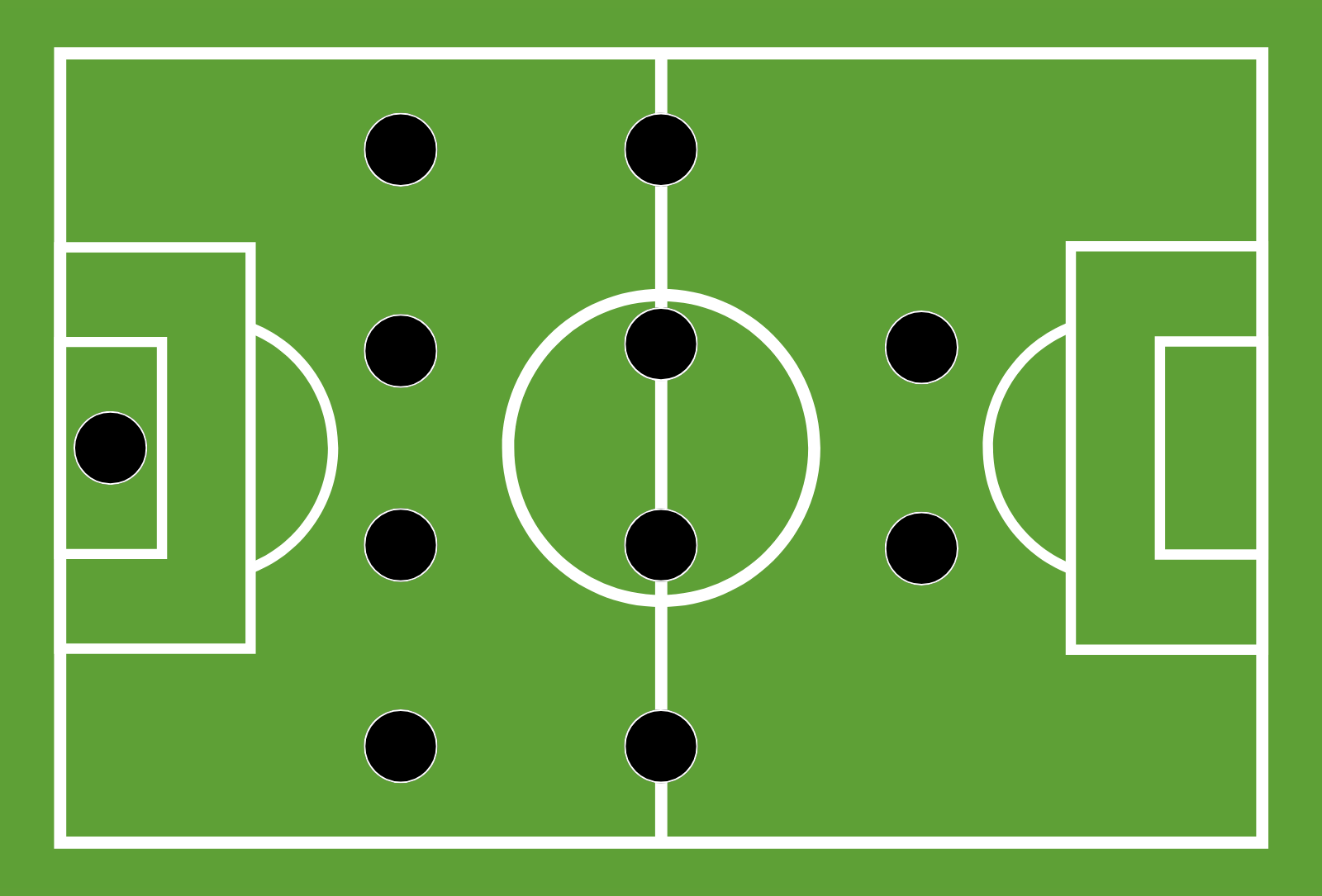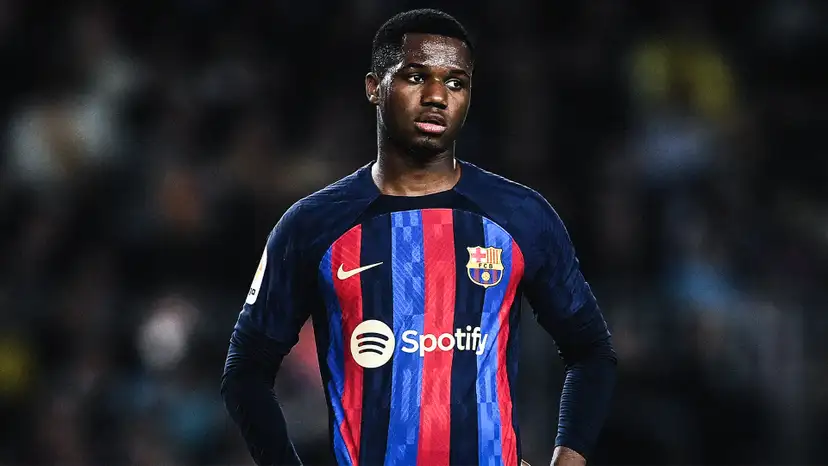
For decades, fans and pundits have obsessed over formations like fashion trends, “the 4-4-2 is dead”, “everyone plays a 4-3-3 now.” Those numbers have always been the simplest way to describe what they saw: eleven players arranged neatly across a chalkboard. But the truth is that in modern football, those numbers mean less than ever.
Formations are no longer static shapes; they are living systems. What begins as a 4-3-3 on paper can quickly morph into a 3-4-3 when building from the back or a 4-5-1 when defending deep. Within the same sequence, a full-back might drift into midfield, a winger might step inside as a second striker, and a holding midfielder might drop into defence. In the top level of football, the starting shape is merely a reference point, not a restriction.
That’s why trying to name the “most effective formation” is a flawed debate. The real evolution of football has moved beyond numbers. True effectiveness today lies in how a team uses its shape, how it shifts to find space, creates overloads, and adapts to both the ball and the opponent. It is no longer about how a team lines up, but how it moves.
In other words, the concept of a perfect formation is obsolete. Modern football has replaced it with a flexible, principle-driven system built on movement, spacing, and cohesion. What matters now is the ability to achieve numerical and positional advantages across different phases of play, to manipulate space, not just occupy it.
While football has evolved beyond fixed numbers, certain formations continue to serve as reliable starting points. The 4-3-3 and its close relative, the 4-2-3-1, have become the global defaults, not because they’re flawless, but because they offer balance. These shapes naturally form defensive triangles and passing lanes, giving teams structural security without sacrificing attacking width. Most importantly, they make transitions cleaner: one midfielder can sit deep, two can press high, and the wide players can recover quickly into defensive positions.
The back three systems, typically 3-4-3 or 5-2-3, have seen a resurgence in recent years. They provide natural width in the first phase of build-up and allow central defenders to step into midfield with the ball, creating a sense of control against pressing opponents. The trade-off, however, comes in the wide midfield zones. Teams using wing-backs often find themselves exposed in transitions if possession is lost high up the pitch. Still, the back three remains an appealing framework for teams looking to dominate possession while maintaining defensive security.
What’s important to understand is that these formations are launchpads, not blueprints. They define how a team positions itself defensively, but they do not dictate how that team attacks. Once the ball moves, the system bends, flexes, and reshapes itself.
That’s where the modern tactical era truly begins, where static lines turn into dynamic rotations. The moment the ball starts rolling, formations dissolve and principles take over. Coaches like Mikel Arteta, Pep Guardiola, and Xabi Alonso have each demonstrated this truth in their own way: the best teams don’t chase a specific number pattern, they chase control. Their players know when to push, when to drop, when to overload, and when to protect.
It’s in those transitions between phases, from defence to build-up, from attack to rest defence, that the real effectiveness of a system emerges. The most advanced sides in football have stopped worrying about what their lineup looks like; they care about what it does.
If formations no longer define teams, principles do. Every top side today operates on a set of tactical ideas that guide how they behave with and without the ball. These principles dictate structure, spacing, and decision-making. In essence, they are the invisible rules that make modern football so fluid yet organised.
The most common of these is positional play, the concept made famous by Pep Guardiola but now shared by many managers. The idea is simple: occupy specific zones on the pitch to stretch the opposition, maintain passing options, and create overloads in key areas. When done well, positional play allows teams to dominate possession without losing control of defensive shape.
A key element within this is the inverted full-back, a role that has reshaped modern football. Rather than staying wide and overlapping, full-backs now step inside into midfield when their team has the ball. This inversion creates a central overload, often turning a base formation like 4-3-3 into something more complex, such as a 3-2-5 or 3-2-4-1 in possession. The purpose is to secure the middle of the pitch, dominate transitions, and give the team a stable platform to build attacks.
When John Stones began moving into midfield for Manchester City in their 2022–23 treble-winning season, it was not just a tactical experiment, it was the future unfolding in real time. In that system, City’s nominal 3-2-4-1 could shift into a 3-2-2-3 to create a “box midfield” depending on Stones’ movements. The result was total control in central areas, which allowed the creative players to thrive higher up. What Guardiola designed has since inspired others, including Arteta at Arsenal and De Zerbi at Brighton, to build their systems around similar structures. The box midfield has become one of the defining features of the modern game. By creating a 2-2 structure in central areas, teams can outnumber the opposition’s midfield, ensuring smoother progression through the lines. It also makes pressing traps easier to spring since players are positioned to immediately close down spaces upon losing the ball.
Out of possession, the principles remain just as structured. Teams press in synchronised waves rather than individually. The emphasis is on compactness, staying close enough between lines so that the opponent’s options are limited. This makes transitions shorter and recoveries more dangerous. Defensive shapes such as the 4-4-2 mid-block or the 5-4-1 low block still exist, but they are now just one part of a broader system designed to win the ball back efficiently rather than merely to resist pressure.
The true sophistication of modern tactics lies in this balance. The best teams are those who can maintain attacking ambition while still protecting themselves defensively. The midfield, once seen as a place for specialists, a destroyer, a passer, a runner/box to box has become a fluid unit that constantly shifts roles depending on the phase of play. Players must think and move within these principles rather than within fixed positions.
Ultimately, the modern tactical era is not about defending or attacking better in isolation. It is about connecting both phases into one continuous flow, a system where every movement has meaning and every player’s positioning serves a collective idea. That is why watching teams like Guardiola’s City or Arteta’s Arsenal feels more like watching a rehearsed pattern unfold than a random contest. The principles, not the formation, dictate everything.
No tactical system works without the right players. The modern era has redefined what coaches look for in each position. It’s no longer enough for a full-back to defend or a striker to finish. Every player now needs to be technically secure, tactically aware, and adaptable to multiple roles within a single match.
The role of the inverted full-back, for example, demands defenders who can operate under pressure in central areas, players comfortable receiving the ball on the half-turn, capable of playing progressive passes, and intelligent enough to adjust their positioning based on the team’s shape. This is why traditional full-backs have slowly given way to hybrid profiles like Oleksandr Zinchenko, João Cancelo, and Trent, who combine their defensive engagements with midfield-level technical skills.
Midfielders, too, have evolved. The days of a purely destructive “number six” are fading. Modern holding midfielders must dictate tempo, protect space, and act as an extra defender during transitions. Players like Rodri or Martin Zubimendi embody this dual function, shielding the back line while also initiating build-up play with composure. Their ability to read the game allows their teams to maintain balance even when full-backs push high or centre-backs step into midfield.
Even in attack, player versatility has become a tactical weapon. Wingers like Bukayo Saka, Mo Salah and Vinicius are not confined to the touchline; they operate as inside forwards who stretch defences horizontally while creating space for overlapping teammates. Strikers are often tasked with dropping deep to link play or pressing as the first line of defence.
This adaptability has changed recruitment too. Clubs now scout less for traditional positions and more for traits, press resistance, scanning, decision speed, positional flexibility. Managers like Arteta and Alonso build squads around multifunctional players capable of performing two or three roles depending on the game plan.
In short, modern football rewards intelligence over instinct. The system comes first, but the system only thrives if the players can interpret it. The beauty of today’s game lies in that harmony, between tactical structure and individual freedom, between the coach’s vision and the players’ execution. The shape may shift, the principles may evolve, but adaptability remains the one constant.
Modern football has moved past fixed formations. What matters now is not the numbers on paper but how well a team applies its principles, spacing, movement, and control of transitions. The best coaches, from Guardiola to Arteta, design systems that adapt to each phase of play instead of locking players into rigid roles. The truth is simple: there is no “most effective” formation, only effective ideas. Success now depends on clarity of instruction and player intelligence, not the starting shape. In football today, it is the coach’s philosophy, not the formation, that decides everything.








